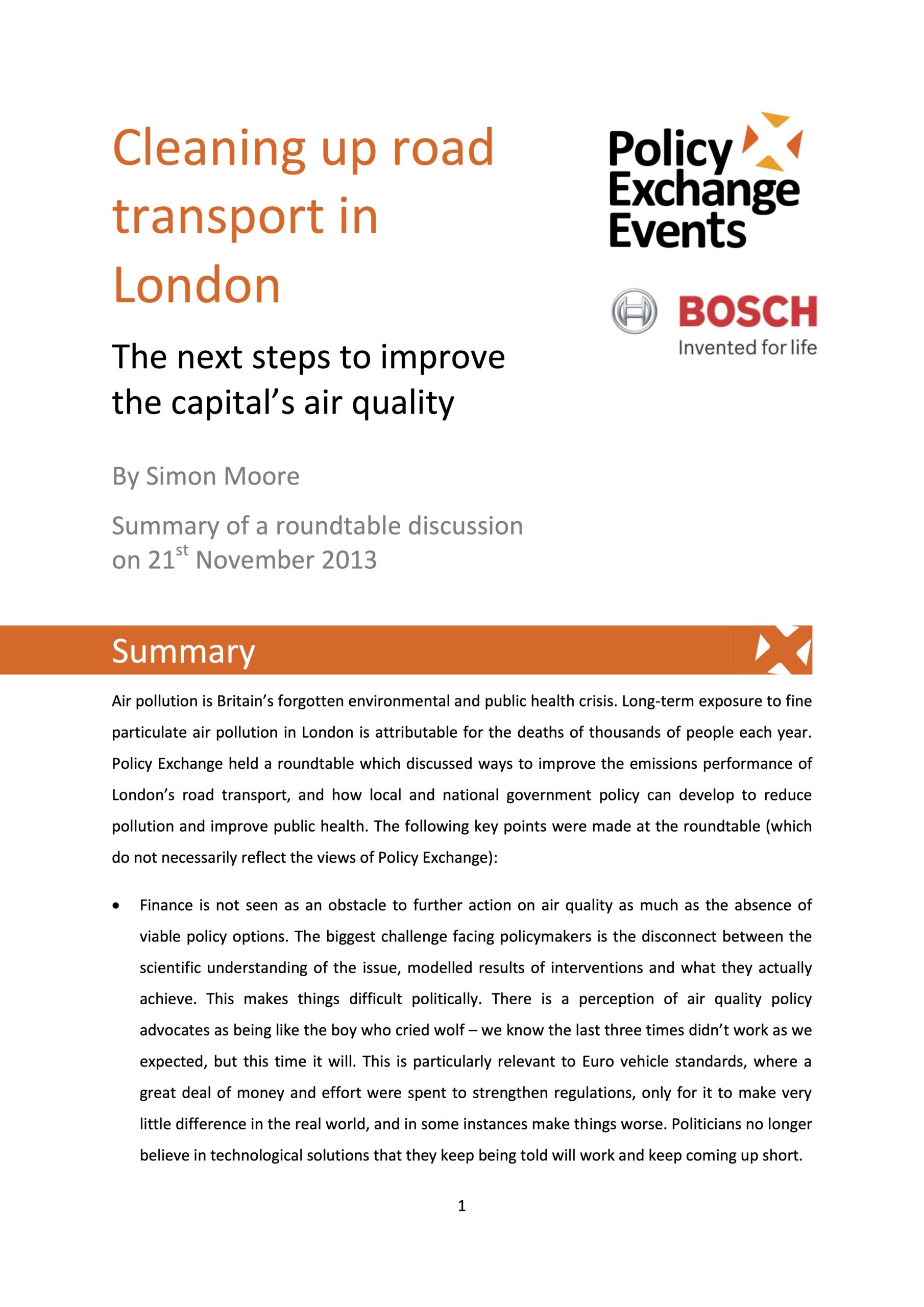
Cleaning up road transport in London: The next steps to improve the capital’s air quality
Air pollution is Britain’s forgotten environmental and public health crisis. Long-term exposure to fine particulate air pollution in London is attributable for the deaths of thousands of people each year. Policy Exchange held a roundtable which discussed ways to improve the emissions performance of London’s road transport, and how local and national government policy can develop to reduce pollution and improve public health. The following key points were made at the roundtable (which do not necessarily reflect the views of Policy Exchange):
- Finance is not seen as an obstacle to further action on air quality as much as the absence of viable policy options. The biggest challenge facing policymakers is the disconnect between the scientific understanding of the issue, modelled results of interventions and what they actually achieve. This makes things difficult politically. There is a perception of air quality policy advocates as being like the boy who cried wolf – we know the last three times didn’t work as we expected, but this time it will. This is particularly relevant to Euro vehicle standards, where a great deal of money and effort were spent to strengthen regulations, only for it to make very little difference in the real world, and in some instances make things worse. Politicians no longer believe in technological solutions that they keep being told will work and keep coming up short.
- With expansion over the coming decade, London needs to accommodate as many extra people as live in a city the size of Birmingham. This means transport provision needs to increase at the same time as air quality improvements need to occur.
- Some argued that current and upcoming improvements in vehicle emissions performance would radically improve matters as they filter into the vehicle fleet. Others expressed doubt that performance had improved as much as is claimed, and a growing scepticism about the gains from future (Euro VI and beyond) vehicle regulations.
- Meeting air quality limit values is likely to require more than technological improvements. Policymakers should look at a wide range of things that affect air quality, including home working and other technological change. They should also think more about whether it makes sense for everyone to be making their commutes at the same times of day.
- Seemingly minor regulations can have a big effect. For example, the requirement for London taxis to have a maximum turning circle has had the effect of excluding much cleaner taxis from London’s streets.
- There are tradeoffs in promoting air quality as a public transport priority. Safety is TfL’s number one priority, and its second priority is to keep the city moving with its aging Victorian infrastructure. Environmental concerns are moving rapidly up the list of other concerns (as is access) but unlikely to dislodge the first two. Campaigners need to be prepared to explain what they want not to have if they are to redirect money to improved air quality performance.
- There is a need to educate the public about the hazards of poor air quality. People need to be thinking about it. Currently the issue is where smoking was in the 1950s and 60s – experts are aware it is dangerous but the risk is not in public’s minds. This cycle of public awareness will take time to change.
In conclusion, the growth of London poses an extraordinary challenge for policymakers already struggling to achieve existing pollution limit values. Advancing medical science suggests these targets should be tougher, while measures to tackle pollution continue to perform disappointingly. Public awareness of the problem is very low. The benefits of improved air quality are difficult to quantify in the cost-benefit analyses used to assess policy measures that might improve air quality. Many other priorities compete for spending from government and for the attention of transport planners.
In order to have an informed debate about what (if any) action should be taken to try to reduce air pollution further, it is important to know what actions are likely to have what results. Reaching low levels of pollution may require a fundamental rethink in the way we use and get around our cities. The consequences of this would be wide-reaching, and careful thought will need to be given to decide whether or not they are appropriate.

